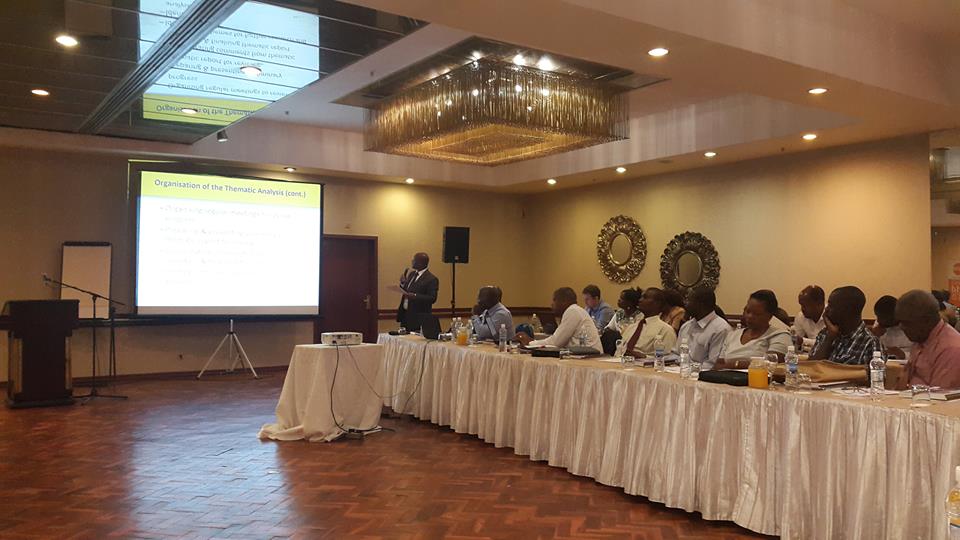Harare, 09 December 2015 --The Zimbabwe National Statistics Agency (ZimStat) with support from the United Nations Population Fund (UNFPA) today launched the key findings from three thematic reports produced from the Zimbabwe 2012 Census.
The thematic reports focusing on three areas, Fertility, Mortality and Population Projections, provide a detailed analysis of data collected during the 2012 Census Report. The results of the 2012 Census were released in December 2013. The launch of these thematic reports is the last specific objective of the 2012 Population Census of producing national population projections to enhance future planning. Statistics are a vital tool for economic and social development and reliable and timely data can help Zimbabwe in the formulation of development policies and programmes.
“The 2012 population census thematic results could not have come at a better time than now when there are a number of national development processes which are quite data intensive such as the mid-term review of the Zimbabwe Agenda for Sustainable Socio-Economic Transformation (Zim Asset), development of a new Zimbabwe United Nations Development Assistance Framework (ZUNDAF) for the period 2016-2020, final review of the Millennium Development Goals (MDGs), and the adoption of the Sustainable Development Goals (SDGs),” remarked UNFPA Zimbabwe Country Representative Mr. Cheikh Tidiane Cisse.

The thematic reports show that while fertility has generally been declining in Zimbabwe, with an implied decline of about 1.8 births during the 30-year inter-census period of 1982-2012, fertility is expected to remain high (around four children per woman) for the next two decades as it occurs too early and late in the lives of mothers, as shown by the high fertility among adolescent women, and significant fertility beyond age thirty five, highlighting the need to address increasing adolescent fertility through adolescent sexual and reproductive health interventions.
The findings show that trends and levels of mortality in Zimbabwe have been significantly influenced by the HIV and AIDS condition. The period 1992 to 2002, when the prevalence of HIV accelerated and when Anti-retroviral therapy (ART) was not widespread, mortality increased among the population. For the inter-census period 2002 to 2012, after widespread adoption of ART, mortality indicators improved significantly.
“The Zimbabwe 2012 Population Census Mortality Thematic Report is the first such comprehensive report in the country and one of the several census thematic reports to be prepared by the Zimbabwe National Statistics Agency (ZimStat) based on the final results of the 2012 Population Census. In preparing the Mortality Thematic Report, ZimStat seeks to put at the disposal of planners, decision makers and development partners reliable data on mortality,” said ZimStat Director General, Mr. Mutasa Dzinotizei.

Although maternal mortality rates have improved by 50% during the inter census period 2002 – 2012, maternal mortality among teenagers (525 per 100,000 live births aged 15-19 years) and women above 40 years, (1108 per 100 000 live births women aged 40-44 years and 2367 among those aged 45-49 years), indicating increasing risk of giving birth at very young ages and at older ages.
The thematic report results also show that Zimbabwe, like many other developing countries, will experience a youth bulge, which could be turned into a “demographic dividend”. Zimbabwe’s population has grown by 74% from 1982 to 2012. Population projections based on the 2012 Population Census show that 64 percent of the population of Zimbabwe will be aged 15-64 years in 2032 compared to 55 percent in 2012.
The population aged 0-14 years is projected to decline to about 32 percent from the current 41 percent and the population 65 years and above is not expected to change. If this transition takes place, it will be similar to the one that brought about the demographic dividend in Eastern Asia. However such a monumental shift in a country’s demographic structure does not happen spontaneously hence Zimbabwe needs to deliberately adopt policies to achieve it.
“The question is whether this demographic transition will be sustained into the future and whether the country will develop the needed measures to transform the unprecedented number of youths into assets,” UNFPA Zimbabwe Country Representative Mr. Cisse
The 2012 Zimbabwe Population Census was implemented as a formal joint programme among three UN organisations, namely; UNFPA, UNICEF and UNDP; one national partner, ZimStat, with significant funding and material provisions availed to ZIMSTAT by the Government of Zimbabwe through the Ministry of Finance and Economic Development; and five bilateral and multi-lateral donor organisations, AusAID (now DFAT), Royal Danish Embassy; DFID (now UK AID), EU and SIDA.
Reports
For more information and media queries please contact
Victoria Walshe, Communications Officer--UNFPA: Tel: 263 782300238: Email: walshe@unfpa.org




